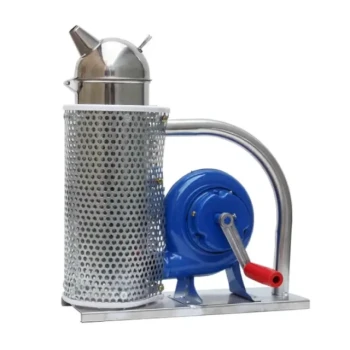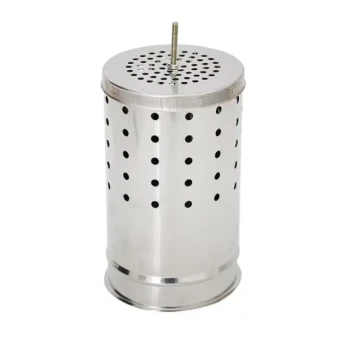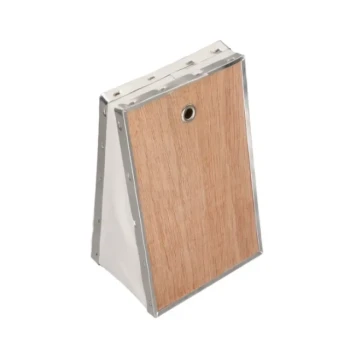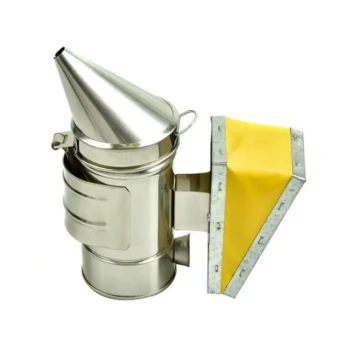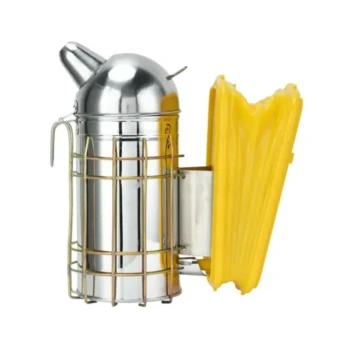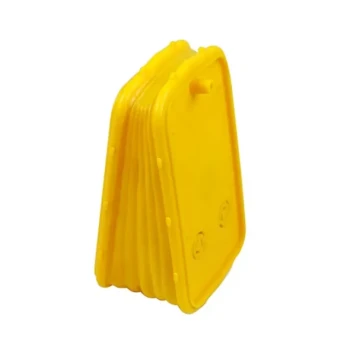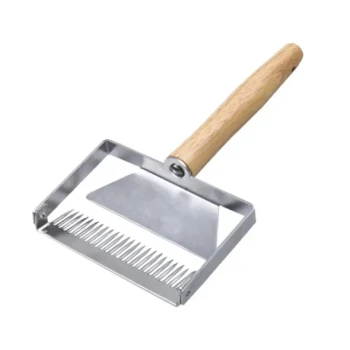At its core, using pine needles for smoker fuel is a trade-off between convenience and performance. While they are free, widely available, and produce consistent smoke, they also burn hot, have a short burn time, and leave a resinous residue that gums up your equipment.
The central challenge in choosing a smoker fuel is not finding something that burns, but finding something that smolders. Pine needles create a hot, open flame, which is less effective and potentially more disruptive to bees than the cool, gentle smoke produced by a smoldering fuel.
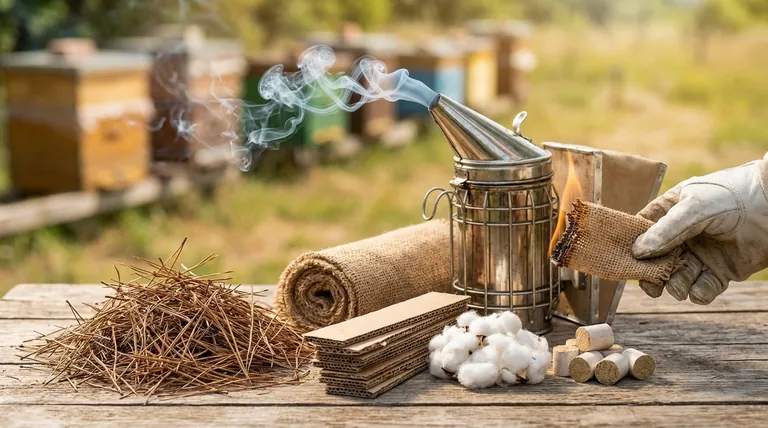
The Case for Pine Needles
Pine needles are one of the most traditional and accessible smoker fuels available, and their use is primarily driven by two key benefits.
Unmatched Availability
For many beekeepers, dry pine needles are abundant and completely free. Their widespread availability makes them a go-to fuel, especially when other commercial options run out.
Consistent Smoke Production
Pine needles light easily and reliably produce a thick volume of smoke. This predictability is valuable when you need to get a smoker going quickly before a hive inspection.
Understanding the Trade-offs
The convenience of pine needles comes with significant drawbacks that impact both your bees and your equipment. Acknowledging these trade-offs is critical for effective hive management.
The Problem of Hot Smoke
Pine needles burn with an open flame, which produces hot smoke. This hot smoke can be agitating to the bees and, in extreme cases, can harm them. The goal of a smoker is to calm bees with cool smoke, not alarm them with heat.
Short Burn Time
The same open flame that creates heat also consumes the fuel rapidly. This results in a short burn time, often requiring you to add more fuel in the middle of a hive inspection, which can be disruptive and inefficient.
Resin Buildup and Maintenance
Pine contains natural resins that vaporize and then condense on the cool metal of your smoker's lid and chimney. This creates a thick, sticky, tar-like buildup that can be difficult to clean and may eventually clog the smoker.
Management and Ember Risk
Because they burn with an active flame, you must place a barrier of fresh, green needles or grass on top. This prevents live embers from being puffed out of the smoker and onto your bees or yourself.
Comparing Pine Needles to Other Fuels
To understand if pine needles are right for you, it helps to see how they stack up against other common fuel types.
Pine Needles vs. Cotton
Cotton fuel, such as untreated rags or batting, is superior in smoke quality. It smolders without an open flame, producing the ideal cool, white smoke that lasts for a long time. The main drawback is that it can be harder to source than free pine needles.
Pine Needles vs. Wood Pellets
Wood pellets are a commercial option that shares some of the same downsides as pine needles. They often burn with an open flame, produce hot smoke, and can contain resins. However, they are dense and may offer a slightly longer burn time for their volume.
Pine Needles vs. Corrugated Cardboard
Cardboard is another "free" fuel that is easy to find. However, it produces what is possibly the hottest smoke of all common fuels. While convenient, the extreme heat makes it a less desirable choice than pine needles for bee health.
Making the Right Choice for Your Smoker
Your choice of fuel should align with your priorities as a beekeeper. There is no single "best" fuel, only the best fuel for your situation and goals.
- If your primary focus is cost and convenience: Pine needles are a perfectly viable option, provided you manage the hot smoke and are prepared for more frequent smoker cleaning.
- If your primary focus is optimal bee health and calmness: A smoldering fuel like raw cotton or punk wood is the superior choice for producing long-lasting, cool smoke.
- If your primary focus is a balance of performance and availability: Wood shavings or untreated burlap offer a good middle ground, often smoldering better than pine needles without being as difficult to source as cotton.
Ultimately, understanding the principles of cool versus hot smoke empowers you to make the best decision for your hives.
Summary Table:
| Aspect | Pine Needles | Ideal Smoker Fuel |
|---|---|---|
| Smoke Quality | Hot, open flame | Cool, gentle smolder |
| Burn Time | Short | Long-lasting |
| Cost | Free/Abundant | Varies |
| Equipment Residue | High (resinous) | Low |
| Bee Calming Effect | Lower (due to heat) | Higher |
Upgrade your beekeeping efficiency with professional-grade smoker fuel. The right fuel is key to calm bees and a smooth hive inspection. HONESTBEE supplies commercial apiaries and distributors with high-quality, long-lasting smoker fuels designed for optimal performance and minimal residue. Let us help you protect your bees and your equipment.
Contact HONESTBEE today for wholesale pricing on superior beekeeping supplies!
Visual Guide
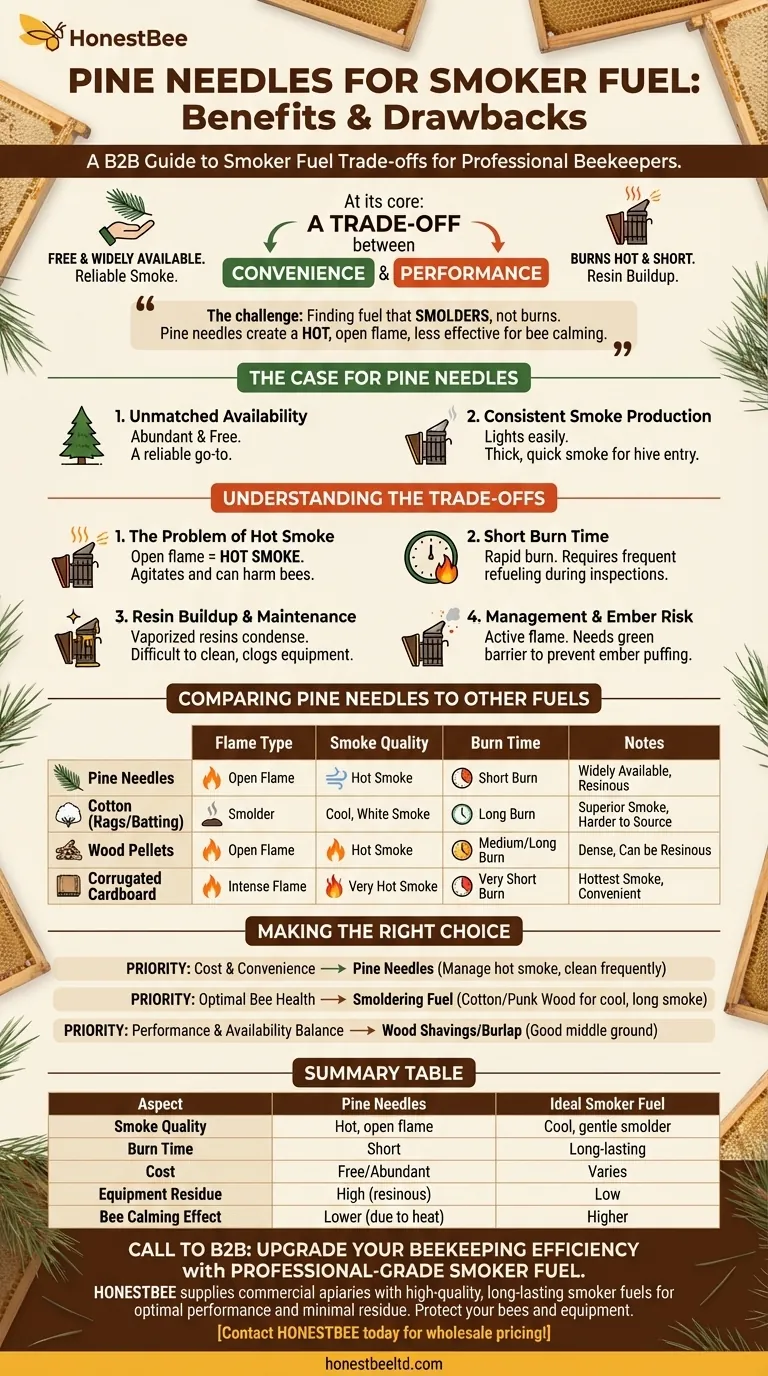
Related Products
- 54-Piece Smoker Fuel Pellets for Beekeeping Beehive Smoker Fuel
- Stainless Steel Honey Bee Smoker Hive and Honeycomb Smoker for Beekeeping
- Stainless Steel Electric Beehive Smoker for Beekeeping and Bee Keeper Use
- Premium Traditional Copper Bee Smoker with Bellows
- European Stainless Steel Bee Smoker for Honey Bee Hive
People Also Ask
- What is used in a bee smoker? Master the Best Fuels for Calm, Healthy Hives
- How should you start the fire in a bee smoker? A Step-by-Step Guide for a Calm Hive
- What is the best bee hive smoker fuel? Choose Natural, Slow-Burning Fuel for Calm Bees
- What to put in a bee hive smoker? A Guide to Natural, Calming Fuels
- What is the importance of fuel in a bee smoker? Ensure Cool, Calming Smoke for Your Hive






